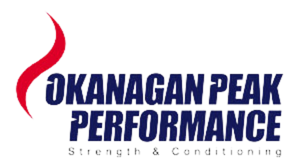How to Recover More Quickly
I’ve written before about the importance of breathing on this blog. But a recent session with a client caused me to think it may be worth revisiting.
The session I am referring to was with a young client who was doing a vertical load of resistance exercises. This basically means he would do one exercise, move to a different second exercise and finish with a third exercise before taking a rest. This is different from horizontal loading, which is seen in many big box gyms, and involves doing a set of a particular exercise, resting for the prescribed amount of time, then repeating this to complete all the sets before moving on to the next part of the training session.
Not only does vertical loading allow for greater workout density it also allows for greater intensity. You can train more intensely because you have more time from one lift until you repeat that same lift again. There are two other exercises plus a rest break before completing the next set of the same exercise.
But this post isn’t about program design. Instead it’s to illustrate the importance of proper breathing during training.
Now as you can imagine doing a workout of this type your heart rate will begin to climb. And if you are a little bit deconditioned, tired, under-fueled, dehydrated, stressed or coming down with a cold your heart may have to work a little harder than normal to do the task at hand. And as your heart rate climbs and you try to push yourself you may find you aren’t recovering adequately to maintain the intensity and pace of your workout.
Since safety precedes results you need an option here. Here’s what we did for this client that helped him complete not only this set but the rest of his workout.
When it came time for his rest break we had him lay on his back. One hand was placed on his navel and we asked him to close his eyes.
Next we asked him to follow a breathing pattern of 2-2-4 which represents a 2 second inhale, a 2 second hold followed by a 4 second exhale. And we asked him to do this all through his nose. Nasal breathing helps restore a parasympathetic state more effectively than oral breathing.

The other two points regarding closing his eyes and placing a hand on his navel were to help him relax more quickly. In particular the hand on the navel was to provide a tactile cue to encourage belly breathing and see that on inhalation the abdomen lifted and expanded and then retracted during the exhalation.
Within 45 seconds of using this recovery technique this client was able to complete the training session at or above the prescribed intensity. Had we not given this a shot the client was most likely done for the day and mentally planning to end the training session.
A bonus with this type of recovery is that it may help athletes move more quickly as well. It is becoming better understood that the difference between elite, world-class athletes and great athletes has little to do with their ability to produce force. Instead one of the big differences between being good and great lies in the ability to limit inhibition of the antagonist muscle groups. While this is a topic for another blog post I believe proper breathing may play a role in assisting an athlete to turn down a muscle and allow them to move more quickly.
In any event give this recovery technique a try the next time you train. Even if you aren’t hitting the wall and feeling nauseous you will still benefit from a quicker and more complete recovery facilitated by proper breathing.
Chris [fb-like]









